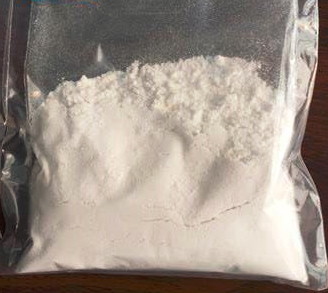
Cyhalofop-butyl
CAS No.: 94-75-7
Properties:
White crystalline powder or light brown liquid. Cyhalofop-butyl is not only highly effective on all kinds of barnyard grasses (including old barnyard grass), But also control cephalopod, crabgrass, paspalum, setaria, goosegrass, and gladiolus, etc.
Mode of action:
Fatty acid synthesis inhibitor, by inhibition of acetyl CoA carboxylase (ACCase). Selectivity between susceptible grasses and dicotyledonous plants is attributed to the forms of ACCase present and their compartmentalisation within plant cells. Susceptible grasses contain the susceptible eukaryotic form of ACCase; dicotyledonous plants contain both susceptible eukaryotic and herbicide-resistant prokaryotic forms of ACCase, rendering them resistant to cyhalofop-butyl. Rice tolerance to cyhalofop-butyl is due to rapid metabolism to the herbicidally inactive diacid (DT50 <10 h), whereas susceptible grasses metabolise cyhalofop-butyl to the herbicidally active monoacid. Post-emergence herbicide with foliar uptake only and no soil activity. A systemic herbicide that is readily absorbed by plant tissue, is moderately phloem-mobile and accumulates in meristematic regions. Grass weeds cease growth immediately after treatment, with yellow patches appearing within 2–3 days to one week, leading to necrosis and death of the whole plant within 2 to 3 weeks.
Usage:
Cyhalofop-butyl is not only highly effective on all kinds of barnyard grasses (including old barnyard grass), But also control cephalopod, crabgrass, paspalum, setaria, goosegrass, and gladiolus, etc. For post-emergence control of grass weeds in rice. Applied at 75-100 g/ha in tropical rice and 180-310 g/ha in temperate rice.
Properties:
White crystalline powder or light brown liquid. Cyhalofop-butyl is not only highly effective on all kinds of barnyard grasses (including old barnyard grass), But also control cephalopod, crabgrass, paspalum, setaria, goosegrass, and gladiolus, etc.
Mode of action:
Fatty acid synthesis inhibitor, by inhibition of acetyl CoA carboxylase (ACCase). Selectivity between susceptible grasses and dicotyledonous plants is attributed to the forms of ACCase present and their compartmentalisation within plant cells. Susceptible grasses contain the susceptible eukaryotic form of ACCase; dicotyledonous plants contain both susceptible eukaryotic and herbicide-resistant prokaryotic forms of ACCase, rendering them resistant to cyhalofop-butyl. Rice tolerance to cyhalofop-butyl is due to rapid metabolism to the herbicidally inactive diacid (DT50 <10 h), whereas susceptible grasses metabolise cyhalofop-butyl to the herbicidally active monoacid. Post-emergence herbicide with foliar uptake only and no soil activity. A systemic herbicide that is readily absorbed by plant tissue, is moderately phloem-mobile and accumulates in meristematic regions. Grass weeds cease growth immediately after treatment, with yellow patches appearing within 2–3 days to one week, leading to necrosis and death of the whole plant within 2 to 3 weeks.
Usage:
Cyhalofop-butyl is not only highly effective on all kinds of barnyard grasses (including old barnyard grass), But also control cephalopod, crabgrass, paspalum, setaria, goosegrass, and gladiolus, etc. For post-emergence control of grass weeds in rice. Applied at 75-100 g/ha in tropical rice and 180-310 g/ha in temperate rice.
Specification:
Appearance | White crystalline powder |
Acetone insolubles | ≤0.2% |
Water | ≤ 0.3% |
Content of a.i. | ≥ 97% TC |
Acidity | ≤ 0.3% |
Appearance | light brown liquid |
Content of a.i. | ≥10% |
Water | ≤ 0.5% EC |
PH | 4-7 |
Storage stability: Qualified
Packing: as customer’s request
Types:
TC: 98%
EC: 20%, 30%,
WP: 20%,
OD: 20%
下一个:
Oxadiazon
.png)
.jpg)